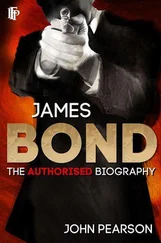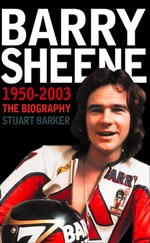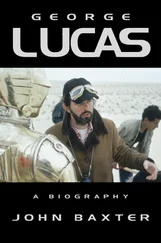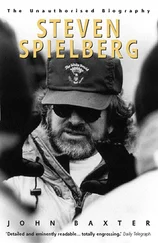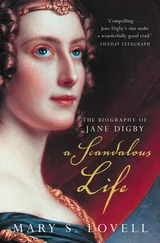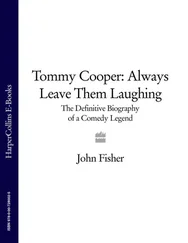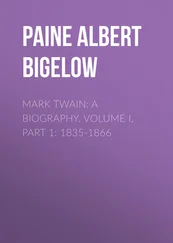At the start by force of circumstances, but later out of a need for reassurance, De Niro became the last star in this ‘anything goes’ school of screen performing. He could have done better by doing less, and by doing less with what he did do. A character actor by birth, he allowed himself to be made a leading man, and, born to play villains, agreed to play the hero; and a hero, moreover, in a medium littered with heroes – which, any actor will tell you, are far easier to play.
Robert Towne, screenwriter of Chinatown and Shampoo , has written, ‘Gifted movie actors affect the most, I believe, not by talking, fighting, fucking, killing, cursing or cross-dressing. They do it by being photographed.
‘It is said of such actors that the camera loves them. Whatever that means, I’ve always felt their features are expressive in a unique way; they seem to register swift and dramatic mood changes with no discernible change of expression … Great movie actors have features that are ruthlessly efficient. Efficiency that’s been touched with a bit of lightning, perhaps. Certainly such actors have this in common with lightning; they can illuminate a moment with shock and scorching clarity. And virtually no dialogue.’
Robert De Niro is such an actor. To see him at his best is to be aware of a new capacity in the art of cinema. His gift is all the greater for the reticence with which it is exercised; like those Japanese painters who work with a heavily inked brush on wet paper, the slightest hesitation brings everything to naught. ‘Great feeling shows itself in silence,’ wrote the poet Marianne Moore – then corrected herself. ‘No, not in silence, but restraint.’
When he chooses to restrain himself, to rely on silence, Robert De Niro is among the finest performers of his generation. That he has chosen so infrequently to exercise that control is his tragedy.
I go to Paris, I go to London, I go to Rome, and I always say, ‘There’s no place like New York. It’s the most exciting city in the world now. That’s the way it is. That’s it.’
Robert De Niro
Actors often come from homes that lack imaginative stimulus; the urge to dress up and play other characters is a form of flight from that environment. Yet De Niro’s parents were both artists, and he grew up surrounded by artists. In that, he resembles Bernardo Bertolucci, who directed him in Novecento. Both are artists over whom an affection-filled childhood with creative parents exercised an ambiguous influence, at once stimulating and stifling.
De Niro’s father, also Robert, was born in 1922 in Tipperary Hill, the predominantly Irish quarter of Syracuse in northern New York state. Robert Sr’s mother, Bobby’s grandmother, was Helen O’Reilly before she married Henry De Niro, a salesman and, later, a health inspector, but Robert Sr inherited the dark good looks and mystical temperament of his Italian father, which he passed on to his own son.
The De Niros came from Campobasso, near Naples, well south of the notional divide which separates the cooler northern Italians from the dark and fiery meridionali. A penchant for argument, depression and rage passed largely undiminished from the first of the De Niro name to arrive in the United States at the turn of the century to those members of the family born on American soil, as did an apparently genetic Italian rhythm of speech which became even more pronounced in adulthood.
Robert Sr started painting at five. ‘Why? I don’t know. I was very isolated,’ he said later. By the time he was eleven he was attending art classes at the Syracuse Museum, and showing such ability that the directors gave him a studio of his own. When adolescence brought the usual soul-searching, he shocked his family by embracing atheism, though, in the best traditions of the lapsed Catholic, religious iconography preoccupied him for most of his life, the Crucifixion and other elements of his discarded faith recurring in his work.
He spent the summer of 1938 in Gloucester, Massachusetts, studying with Ralph Pearson, an artist best known for his landscapes. Pearson held his classes on a coal barge in Gloucester Harbour, which is where De Niro first read the plays of Eugene O’Neill. The grim picture of the emigrant experience in O’Neill’s Anna Christie impressed him so much that he modelled a stage set for a possible production.
After Gloucester, De Niro gravitated to New York, studying by day and waiting tables at night. Much serious art discourse in New York at that time centred on Hans Hofmann, who had arrived from Munich via Paris, trailing an impressive record as a teacher and theoretician. Hofmann opened a school in 1933, and in the summer of 1935 started summer sessions in Provincetown, Rhode Island.
In the winter of 1938–39 Hofmann gave an influential series of six lectures in New York on new movements in European art. They were attended by the best emerging American artists, including Jackson Pollock, Arshile Gorky and Willem de Kooning, and future critics Clement Greenberg and Harold Rosenberg, all of whom, recognising that Surrealism was waning, were alert for the next new thing, Abstract Expressionism. The following summer, Pollock and some others followed Hofmann to Provincetown. He only accepted twenty-five students for his summer school. Among them in 1939 was Robert De Niro.
At the end of 1939, De Niro won a place at Black Mountain College in Asheville, North Carolina, where one of the greatest of contemporary artists, Josef Albers, taught. Set up in 1933 by a group of liberal academics, Black Mountain admitted only fifty students, and gave them superior teaching and maximum freedom. De Niro spent most of 1939 and 1940 there – a frustrating time, since Albers found his work ‘too emotional’. De Niro, then, as later, inclined to be argumentative, protested, ‘A painting can’t be too emotional. It can be controlled, but never too emotional.’ After a year of trying to satisfy Albers, he returned to New York early in 1941, with only $5 in his pocket. That summer, he once again attended Hofmann’s summer school.
A village of crackerbox cabins scattered among the dunes of the Atlantic coast, Provincetown had a reputation for bohemianism and political radicalism that went back to the turn of the century. The Provincetown Playhouse and Provincetown Players were co-founded by Communist ideologue John Reed, author of Ten Days that Shook the World , who scandalised the community by running off with Louise Bryant, art-struck wife of a local dentist. In 1916, Eugene O’Neill had his first play performed there. After that, painters and writers from New York and Boston, called sarcastically by the locals ‘wash-ashores’, found it a useful summer hangout, particularly when, thanks to Hofmann, it became a centre for avant-garde artists too.
Young playwright Tennessee Williams also turned up in Provincetown in 1941, hoping to have a play accepted at the Playhouse. He and De Niro met at Captain Jack’s, a pier-end restaurant where both worked as waiters. It shared a building with a boarding house where two out-of-work dance students lived, one of whom, Kip Kiernan, also modelled for Hofmann. Tennessee Williams fell in love with Kiernan, the first man with whom he enjoyed a complete sexual relationship – celebrated in his long-suppressed play Sometimes Cloudy, Sometimes Bright. Williams, Kiernan and their friend Donald Windham made no secret of their activities, documenting them in nude photographs. Among Williams’ lovers that summer was Jackson Pollock, whose alcoholism inflamed a taste for being promiscuously sodomised.
With his movie-star good looks – he resembled the actor Robert Stack – De Niro was not short of admirers, male and female, and it was during this period at Provincetown that he acknowledged his own homosexuality, and probably had his first homosexual experience. Williams and Kiernan may have initiated him, but it’s equally possible that Pollock was among his first lovers.
Читать дальше

